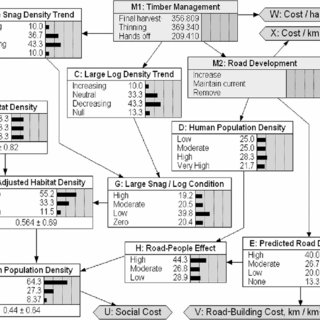Your Legal Resource
Bayesian Belief Networks (bbns) In Ecology
Sample of the article:
Abstract
We developed procedures for using Bayesian belief networks (BBNs) to model habitat and population viability of selected at-risk fish and wildlife species. The BBN models represent the ecological causal web of key environmental correlates (KECs) that most influence habitat capability, potential population response for each species, and influence of habitat planning alternatives. BBN models represent site-specific KECs, habitat capability at the subwatershed level and a pattern of habitat capability across all subwatersheds. BBNs use Dirichlet prior probability distributions and standard Bayesian updating of posterior probabilities. We derived estimates of prior and conditional probabilities from a mix of empirical data and expert judgment, mostly the latter. Sensitivity analyses identified planning decisions and KECs that most influence species outcomes, and can help prioritize monitoring activities. BBN models, however, substitute for neither field studies nor empirical, quantitative population viability analyses of population demography and genetics.
Full Article for viewing and download with figures
